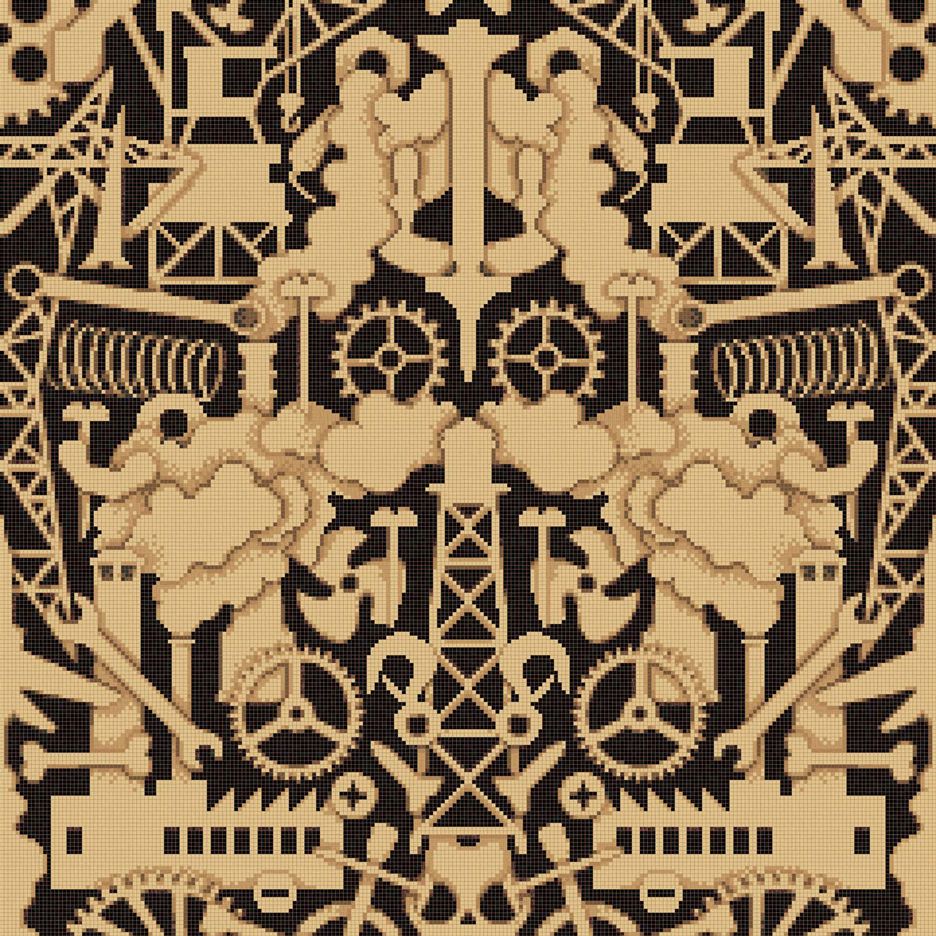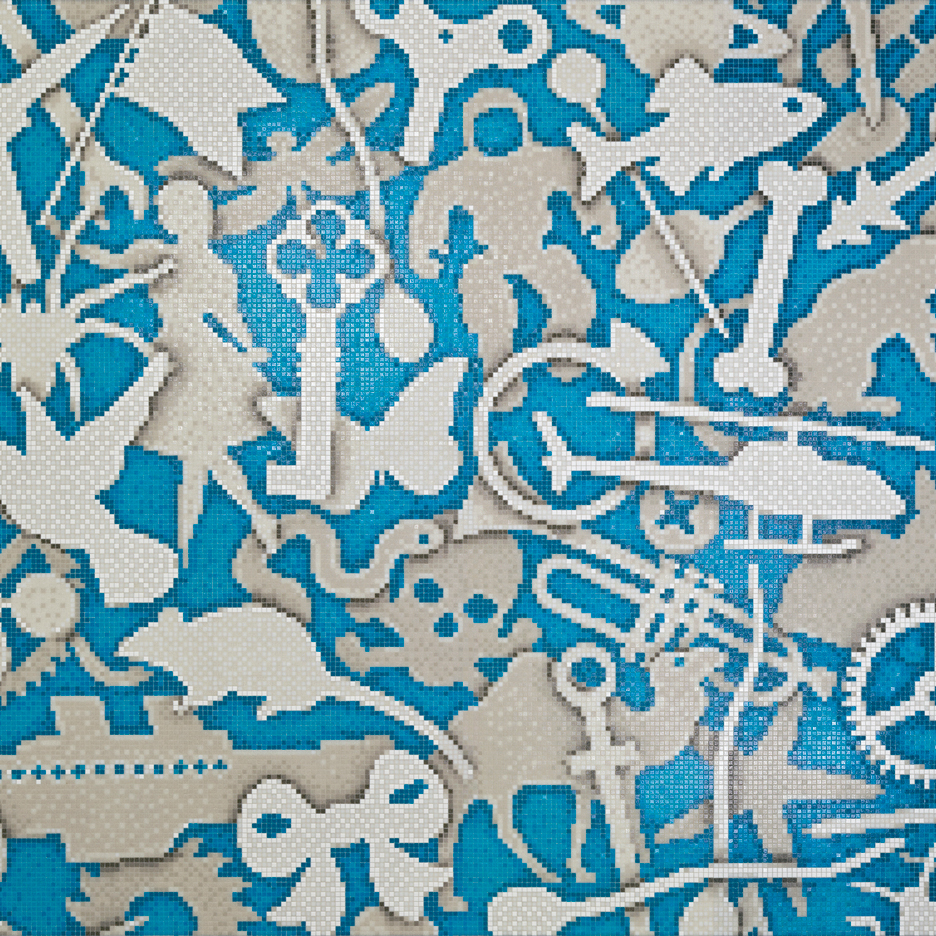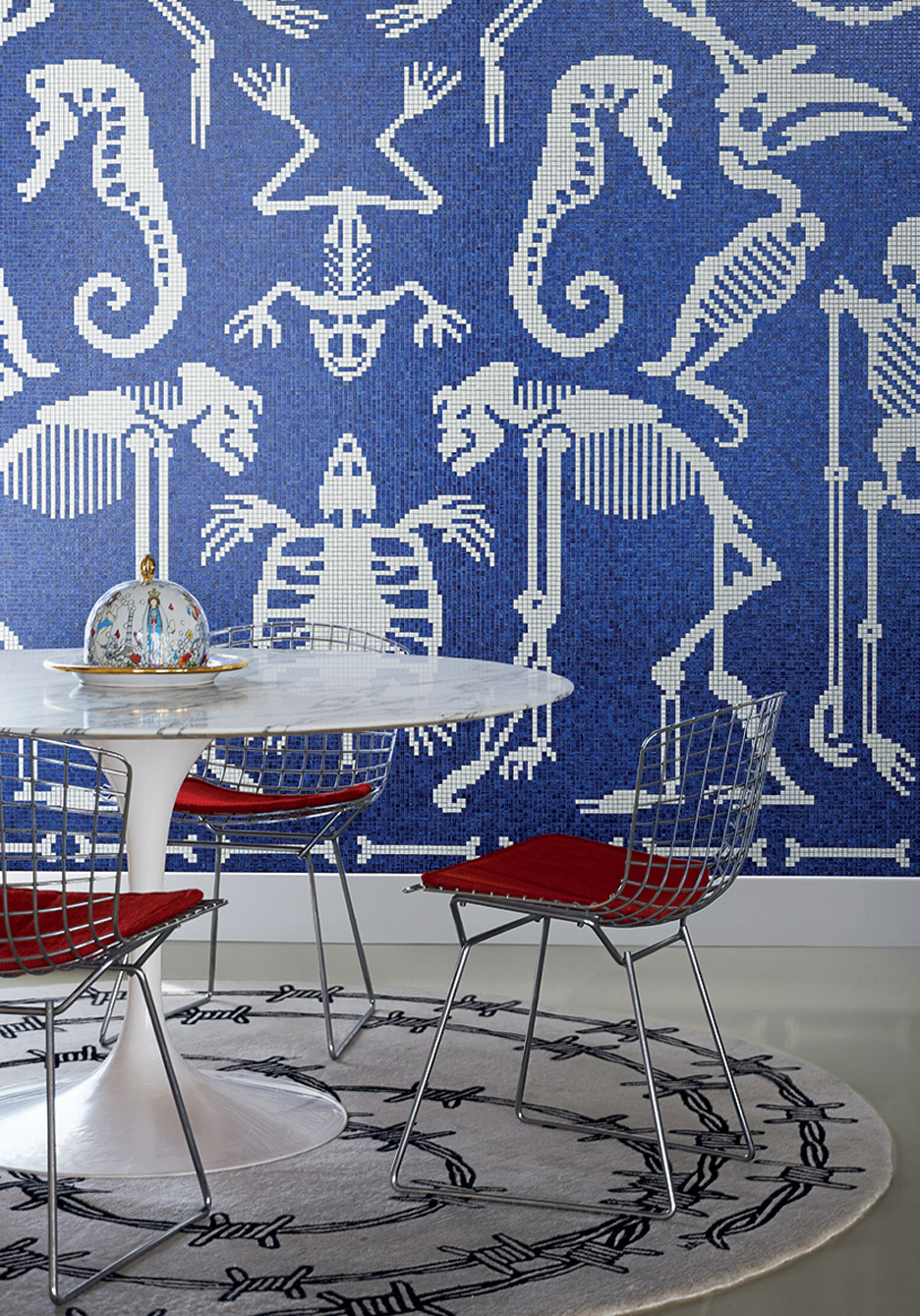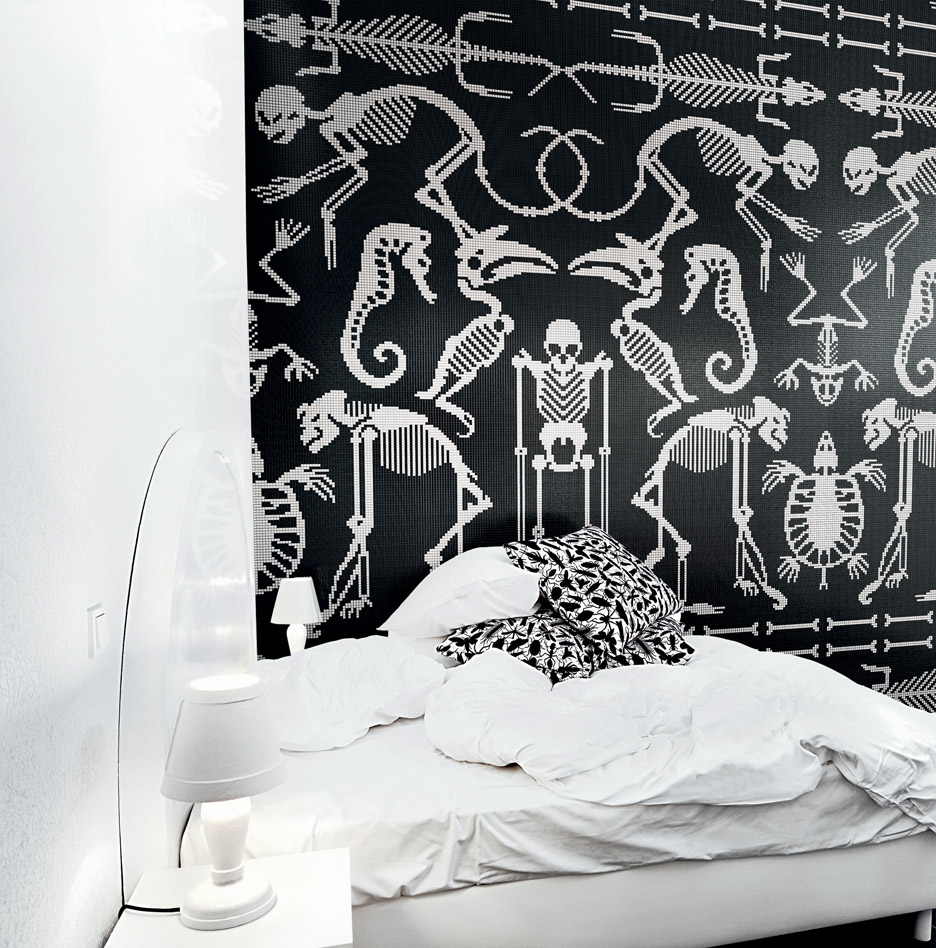Studio Job updates collection of mosaic tiles for Bisazza
Milan 2016: Studio Job has updated its collection of mosaic tiles for Italian brand Bisazza, including a range influenced by Britain's Industrial Revolution.
The Belgian studio launched its updated range of tiles at this year's Milan design week, which took place from 12 to 17 April 2016.
As well as presenting its existing spooky-looking Perished collection, the studio unveiled a range named Industry Amber inspired by Britain's Industrial Revolution.

The Industrial Revolution took place during the late 18th and early 19th centuries, when scientific advances and technological innovations brought about growth in agricultural and industrial production, economic expansion and changes in living conditions.
"The Industry Amber decorative motif alludes to Britain's Industrial Revolution of the 1800s," said the studio. "In a modern and decidedly singular texture, symbolic objects from that period – including steam engines, locomotive wheels, work tools and industrial buildings – are juxtaposed, lending an effect of depth and wrought in warm shades of amber."

The designs are patterned with the same industrial motifs as Studio Job's 2010 Industry Series of furniture designs, which includes rosewood tables, cabinets and room dividers patterned with lighter inlays.
A third collection, named Silhouette Turquoise, is indented to be a "playful" overlapping of everyday objects. It features a random mix shapes including keys, astronaut suits and ribbons.
A motif named Festoon completes the collection, and is made up of a series of gold and silver ribbons intersecting each other upon a white background.

Studio Job is a partnership between Job Smeets and Nynke Tynagel, who symbolised their romantic break-up as a head-on collision between two steam trains earlier this year.
The artists have an ongoing collaboration with Bisazza. The brand first presented their designs alongside work by Spanish designer Jaime Hayón during Milan design week in 2007.
"We want to create a collection that is exclusive for the quality of the material and technique," they said. "Order arises from a methodological treatment of disorder."

"By creating a symbolic language in the patterns, our ordered disorder comes to symbolise both power and danger," they continued.
More recent projects by the duo include a series of lamps shaped like peeled bananas and a giant crystal-encrusted model for the Swarovski theme park.
The first retrospective exhibition of their work in the US is currently on show at New York's MAD museum.